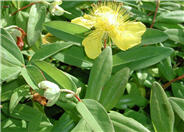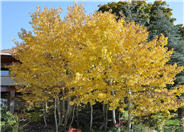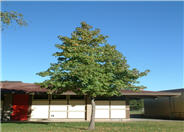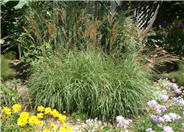
Common name:Creeping St. Johnswort, Aaronsbeard
Botanical name:Hypericum calycinum
Hypericum calycinum is semi-woody perennial groundcover. It has attractive blue-green foliage that stays evergreen in mild winters, sometimes taking on a purplish hue. It has interesting bright yellow flowers June through September, followed by red berries. It grows 12 to 18 inches tall and 24 inches wide, and spreads by underground runners. Does well in dry shade areas.

Common name:Quaking Aspen
Botanical name:Populus tremuloides
Though iconic to the Rocky Mountains, Aspen aren't well suited to our urban and valley landscapes. They resent the summer heat and the lack of snow, and as such are prone to a host of disease and pest issues. And if that's not enough, their tendency to sucker can create a maintenance nightmare. Consider instead Serviceberry or Manchurian Ash for a similar appearance.

Common name:Burgundy Liquidambar
Botanical name:Liquidambar styraciflua 'Burgundy'
Burgundy liquidambar was selected for its purple-red fall color. It is a deciduous tree with an upright, narrowly pyramidal habit, growing moderately to 40 feet tall and about 15 to 20 feet wide. Leaves are maple-like with a rich green color during the summer months. It has round seedpods, about the size of pingpong balls, and they are sort of spiny; no bother dropping into shrubby or groundcover areas, but a little tough on lawnmowers. They are great for craft projects, though.

Common name:Japanese Silver Grass, Maiden grass
Botanical name:Miscanthus sinensis
Miscanthus is a large group of ornamental grasses ranging from a few feet to over 7 or 8 feet tall. Blade colors range from solid green, to green with silver mid-ribs, to variegated forms. Plumes are generally held well above foliage clumps, appearing in late summer to early fall, depending on the variety, and may be cut for fresh or dry arrangements.
| Designer: Kelly Pack | Kelly Asian 3 |
Photographer: GardenSoft |
Water Saving Tip:
Group plants in your garden according to their water needs (hydrozone).
